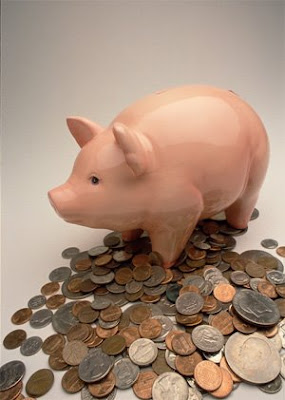Meenakshee, 23, remembers with considerable fondness how, as a sixth-grader, she hoodwinked her mom into doling out money for a Hindi textbook — all of five times. “Of course, I bought the book only once and with the rest of the money, treated myself to a McDonald’s burger,” says Meenakshi with unabashed pride at her ingenuity. Her mom was obviously displeased when she caught on to the trick. Meenakshi, however, simply shrugs her shoulders and says her family anyway didn’t have a concept of pocket money. “We just took money as and when we needed it.” Now if Meenakshi were to be given a lumpsum amount for a particular period and asked to keep an account of what she spent on and how much, her mom would have known exactly what she did in her spare time too.
Pocket money is clearly not just survival and feel-good money; it is a lesson in life. Much like games that prepare children for adulthood, pocket money trains them to manage finances — a worthwhile lesson for the future. That’s how important it is.
“If you want your child to value money, put him under financial pressure,” advises Kartik Jhaveri, director of Transcend Consulting, a wealth management firm. Even if a family is super-wealthy, “don’t shell out ad-hoc money, unless there is a compelling reason to do so. Pocket money should be given like a monthly salary… Where there is no upper limit, the child’s value system gets paralysed”. Certified financial planner D Sundararajan seconds this line of thought. Not verifying where the money is going, he warns, can be disastrous. The child may learn to live off his parents and thus never get a chance to be a person in her or his own right.
Which is why, parents would do well to have a rough idea about how much is required for a child’s expenses such as transport or school canteen. Teens may have extra expenditure for weekend entertainmentand gifting. Parents must sit with their children, explain basic rules of spending and only then hand out an appropriate sum.
Now, what is appropriate? “Give a child 20% over and above what is required,” advises Jhaveri. This will give parents a concrete idea as to what their child does with the surplus. It will thus serve as an insight into a child’s personality. Mira Patel, 60, remembers giving a princely amount of Rs 200 a month each to her three daughters. “The eldest spent and saved some. My second daughter usually managed to save the entire amount. And my third blew the entire sum and never had an idea what she’d spent it on.” Accordingly, parents could tutor a child how to manage money. Here are some ideas: Encourage a child to save by proposing what could be done with a sum accumulated over time. Perhaps, he or she could buy a game of choice? Or, a child could simply be rewarded for saving a target amount with a gift.But, first of all, for sustained success of any enterprise, one requires discipline and accountability. As financial advisor Gaurav Mashruwala says, “It’s funny. We invariably expose kids to spending without being accountable. That irresponsibility lasts through one’s life.” Mashruwala thus insists that the habit of budgeting must be inculcated from the very first time a child is given pocket money. “If there is no budget, all families will struggle without exception. Like, suppose as an adult, you intend to keep aside expenses of three months as contingency fund. Now, how do you decide how much to keep aside if you don't know your expenses in the first place?”

A lot can be achieved with simple bu d g e t i n g . M a s h r u w a l a cites the instance of one Bhushan Deshpande whose father, a retired government servant, earned Rs 3,000 a month, but somehow managed to get his five children educated and married. Bhushan’s mother played no small role in this familial endeavour. She used to regularly take stitching jobs and would meticulously write down the family budget, a habit which Bhushan internalised. They started an agency to sell small-saving schemes and life insurance. In between, the family also traded in saris. Today, at 36, Bhushan holds a diploma in mechanical engineering and works for a multinational.
“You can’t say the child has no responsibility to accounting. Implications of running an account are lifelong. If he doesn’t learn accounting as a child, he never will,” cautions Mashruwala. Rakesh Shah, 10, has been jotting down his spending on a scribble pad and later loading the data on an excel sheet. A habit that has stood him in good stead and he has managed to save quite well.
That pocket money should be controlled and monitored is echoed by the entire spectrum of financial advisors. Zankhana Shah of Moneycare Financial Advisors suggests a sense of responsibility can be cultivated by helping out parents with bank work and paying bills.
But what if your child is too young to know how to write even? How do you instil in him the knowledge that money does not come free?
Seven-year-old Chinman Mehta is awarded a smilie each time he chooses to be good and a frownie whenever he doesn’t. The emoticons are drawn daily on a weekly chart pasted to the refrigerator in the kitchen. “We subtract the frownies from the smilies and the sum is the amount Chinman receives as his pocket money for the week,” says Neelima, his mother. This incentive system has worked wonderfully for the family.







